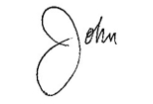
By John Lavey | Hammock President and COO
I recently met with leaders of a healthcare company who told me they had been purchasing articles for their website from a large provider of medical content. But rather than improving their search engine results, the content kept scoring lower and lower. Upon analysis, we discovered that Google was penalizing the company’s site because its content appeared on numerous other sites. In other words, they had filled their site with duplicate content.
And it’s not just consumer-facing healthcare companies that make this mistake. Plenty of healthcare companies aiming to engage providers are misfiring by delivering content that is, at best, commodity content, and, at worst, turns out to be duplicated on many other sites.
Commodity content is a bad idea for a number of reasons:
- It muddles and obscures your brand identity. How does commodity content reflect on your brand? As we’ve discussed in a previous Healthcare Idea Email, inauthentic “stock” messaging is something that human beings are innately talented at recognizing—and they can do so in an instant. Commodity content is low-quality content, and it undermines your investment if the content is not customized for recipients and unique in how it speaks to the value of what your brand delivers.
- It’s the opposite of thought leadership. There are plenty of challenges in the healthcare industry that are of shared concern—issues such as the consumerization of healthcare, interoperability and healthcare legislative policy. But too often, we read whitepaper after whitepaper that says essentially the same thing. If you aren’t delivering something helpful to your prospective customer that’s informed by your unique expertise, it’s not helping them.
- It lowers your SEO results. Patient-facing content often looks the same because it’s bought in bulk, or it’s a version of a version. It lacks the unique point of view that content created with your expertise should deliver. And of vital importance: Google penalizes this practice. Its engineers are constantly refining their algorithms to help web visitors find unique, helpful content. Google gives great advice on avoiding duplicate content. Creating or commissioning original, custom and helpful content is something your users—and Google—will always approve.
Bottom Line: If you are creating content, that’s a great start. Just make sure that your content stands out from the pack, because commodity content hurts you more than helps you.

Image Credit | iStock
About Hammock Healthcare Idea Email | This post is part of Hammock’s award-winning Idea Email series. Idea Emails are sent every other week and share one insightful marketing idea. Idea Email comes in two flavors: Original and Healthcare. To subscribe to the original Idea Email (general marketing ideas), click here . To subscribe to the Healthcare Idea Email (healthcare marketing ideas), click here.

